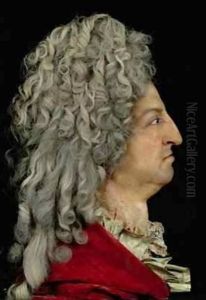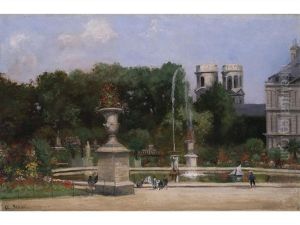Antoine Benoist, or Benoit du Cercle Paintings
Antoine Benoist, also known as Benoit du Cercle, was a French artist celebrated for his mastery in portrait miniatures and wax modeling, a unique art form during his time. Born in 1632 in the town of Rambervillers in Lorraine, France, Benoist was initially trained in painting but later shifted his focus to the intricate art of wax modeling, a medium that allowed him to capture the likeness and subtleties of his subjects with remarkable accuracy and depth.
Benoist's talent quickly garnered the attention of the French royal court, and by 1666, he was appointed as the official court painter and sculptor to King Louis XIV. This prestigious position offered him the opportunity to create portraits of numerous members of the royal family and the court, cementing his reputation as a master portraitist. His work was characterized by its exceptional detail, realism, and the ability to convey the personality and stature of his sitters. One of his most famous works is the life-sized wax portrait of Louis XIV, which showcased not only his skill in capturing the king's likeness but also his innovative use of wax as a medium for grand portraiture.
Throughout his career, Benoist's contributions to the art of portraiture were significant. He is credited with elevating the status of wax modeling from a curiosity to a respected and sought-after art form. His works were admired for their lifelike quality and the technical skill required to create such detailed and nuanced pieces. Despite the prominence of painting and sculpture, Benoist's wax portraits held a unique place in the art world of his time, offering an alternative medium that provided a different kind of intimacy and realism.
Antoine Benoist's legacy extends beyond his contributions to the development of wax modeling. He played a crucial role in documenting the visages of the French monarchy and nobility, leaving behind a valuable historical record of his era. His work influenced subsequent generations of artists, demonstrating the potential of wax as a medium for both portraiture and sculpture. Benoist died in 1717, leaving behind a body of work that continues to be studied and admired for its artistic and historical significance.

